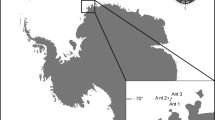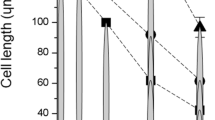Abstract
The anemone Amphianthus inornata is found at bathyal depths living on colonies of the gorgonian Acanella arbuscula. Previous studies of the morphology and reproductive stage of this anemone, during different times of the year, have indicated that it reproduces sexually on a seasonal basis. A small proportion of the study population were also reported to be undergoing asexual reproduction by fission. The anemone Kadosactis commensalis is also bathyal, but lives mainly on the holothurian Paroriza prouhoi. Previous morphological studies have indicated that K. commensalis is a protandrous hermaphrodite that exhibits non-seasonal sexual reproduction only. In the present study, allozyme electrophoresis was used to examine the prevalence and genetic consequences of asexual reproduction in a population of Amphianthus inornata from 2 200 m in the Rockall Trough, North Atlantic Ocean. Genetic evidence, from five randomly selected polymorphic enzyme loci, for asexual reproduction in this species was weak. Exact tests indicated that genotype frequencies did not differ significantly from those expected under Hardy–Weinberg equilibrium. F IS (correlation of homologous alleles with reference to local population, assuming random mating) values also did not differ significantly from zero, and observed heterozygosity (H o =0.446) and genotypic diversity (G o =17.0387) were very similar to Hardy–Weinberg expected frequencies (H e =0.446; G * e =17.0010). Evidence suggests that the contribution of asexual reproduction to recruitment in the study population of A. inornata is low. For a single population of K. commensalis from 4 850 m on the Porcupine Abyssal Plain, North Atlantic Ocean, the hypothesis that inbreeding due to reduced occurrence of outcrossing between anemones on a single holothurian host was examined by electrophoresis of ten randomly selected enzyme loci. Single-locus genotypic frequencies were significantly different from expected frequencies for one locus P≤ 0.05, hexokinase-1 (Hex-1)]. F IS values were significantly different from zero for two enzyme loci (Hex-1 and Hex-2, P≤ 0.01 and P≤ 0.05, respectively), and the overall observed heterozygosity was lower than the expected heterozygosity (H o =0.125, H e =0.140). The hypothesis of inbreeding could not be rejected by the present study, although sample size was small (N=55), leading to possible bias in tests of significance. Genetic variation in A. inornata was higher than that recorded for most eukaryotes, although interlocus sampling error for only five loci is high. High genetic variability has been found in other sea anemones, and has been related to high longevity and mixed reproductive modes. Genetic variation in K. commensalis was in the higher range of that found in other eukaryotes, and is not unusual for anemones.
Similar content being viewed by others
Author information
Authors and Affiliations
Additional information
Received: 5 August 1996 / Accepted: 11 December 1996
Rights and permissions
About this article
Cite this article
Bronsdon, S., Rogers, A., Tyler, P. et al. Genetic study of the extent and consequences of sexual and asexual reproduction in the deep-sea epizoic anemones Amphianthus inornata and Kadosactis commensalis (Cnidaria: Anthozoa). Marine Biology 128, 231–239 (1997). https://doi.org/10.1007/s002270050087
Issue Date:
DOI: https://doi.org/10.1007/s002270050087




